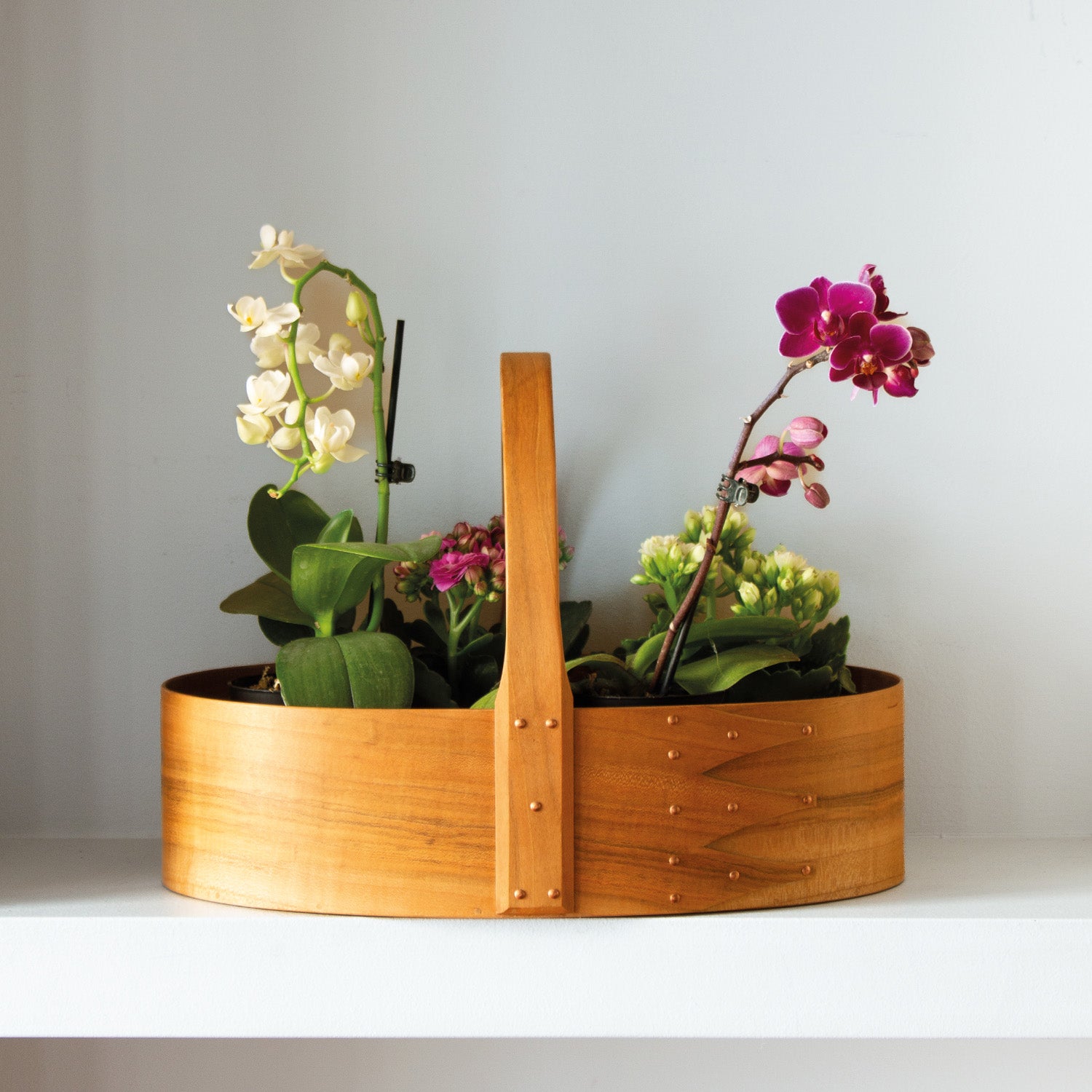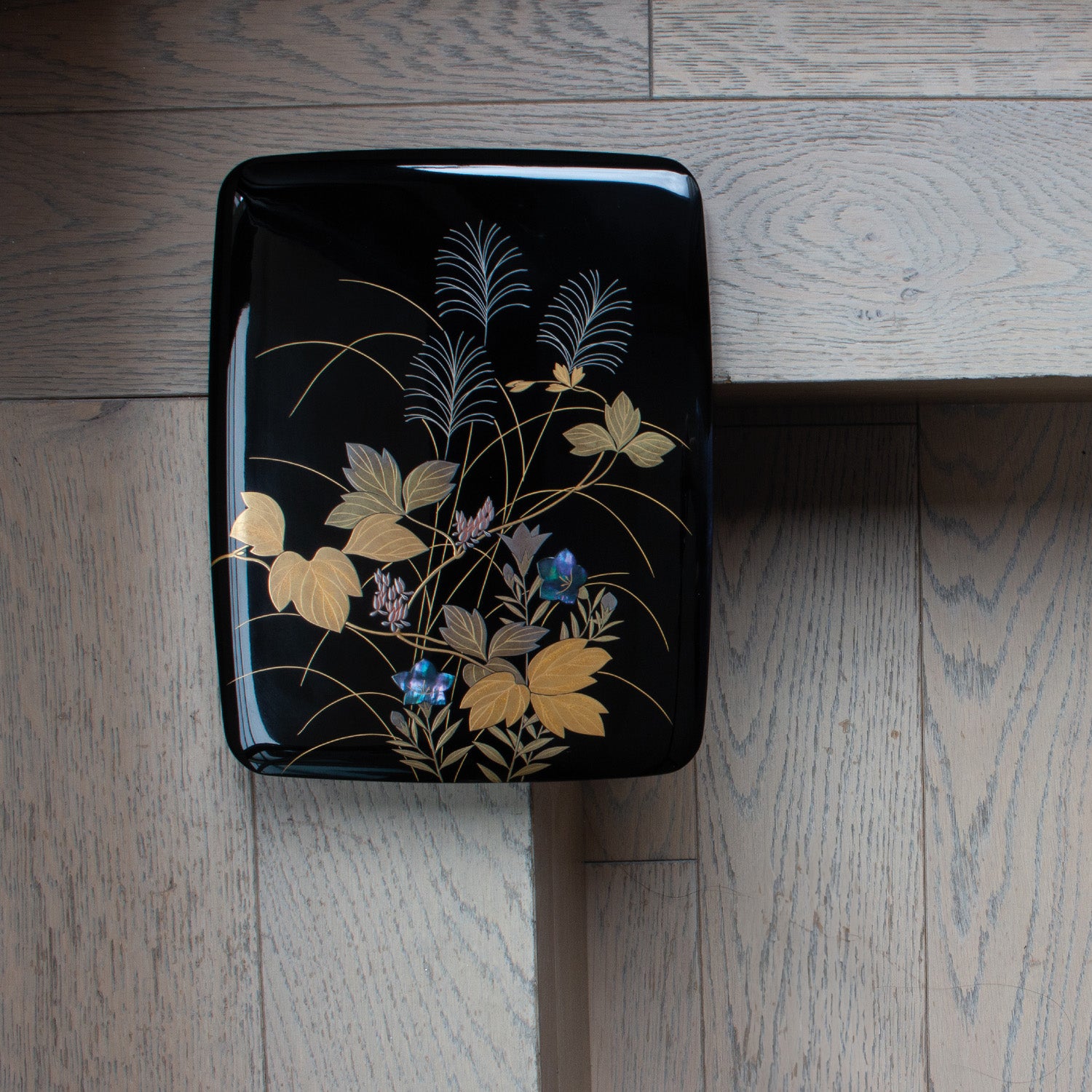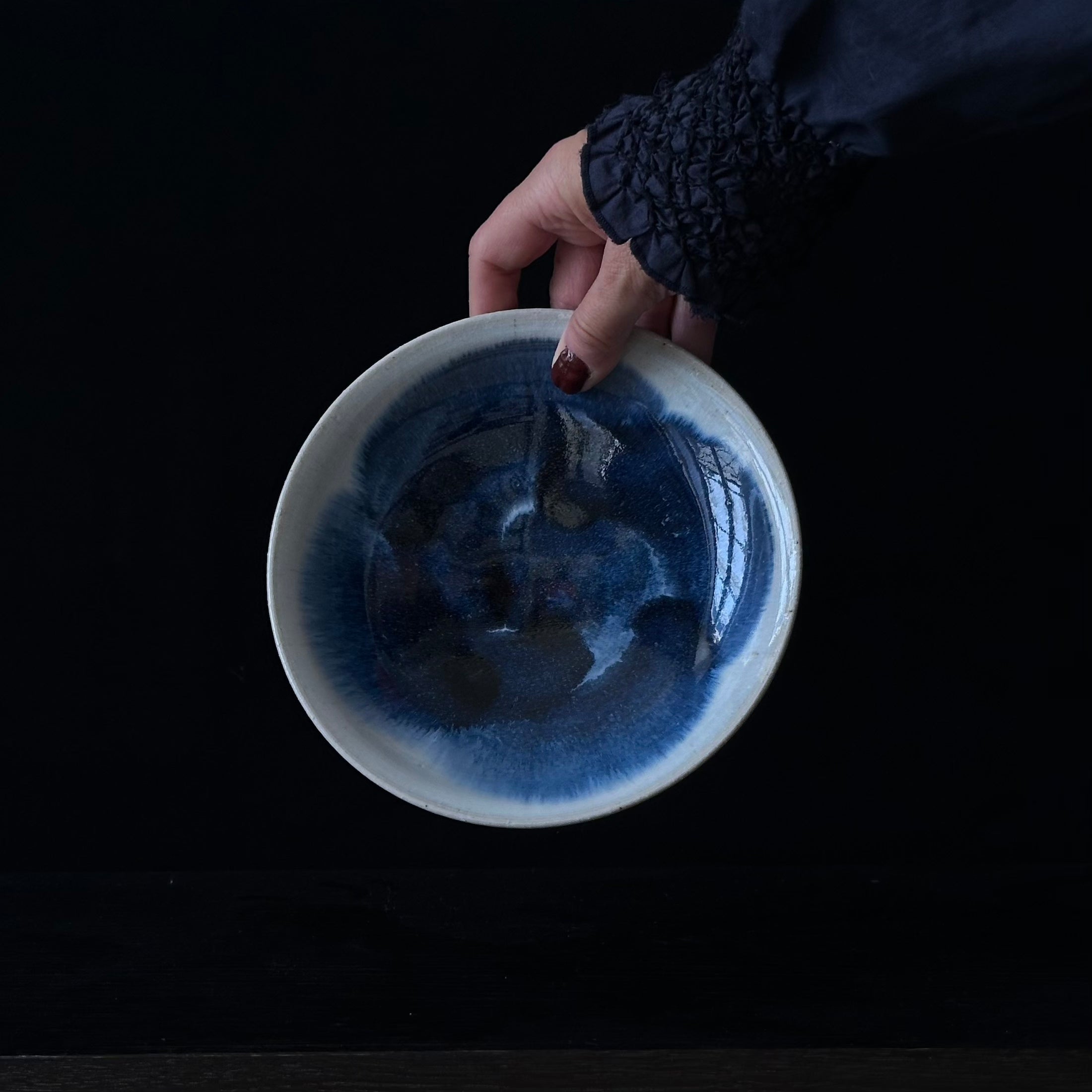
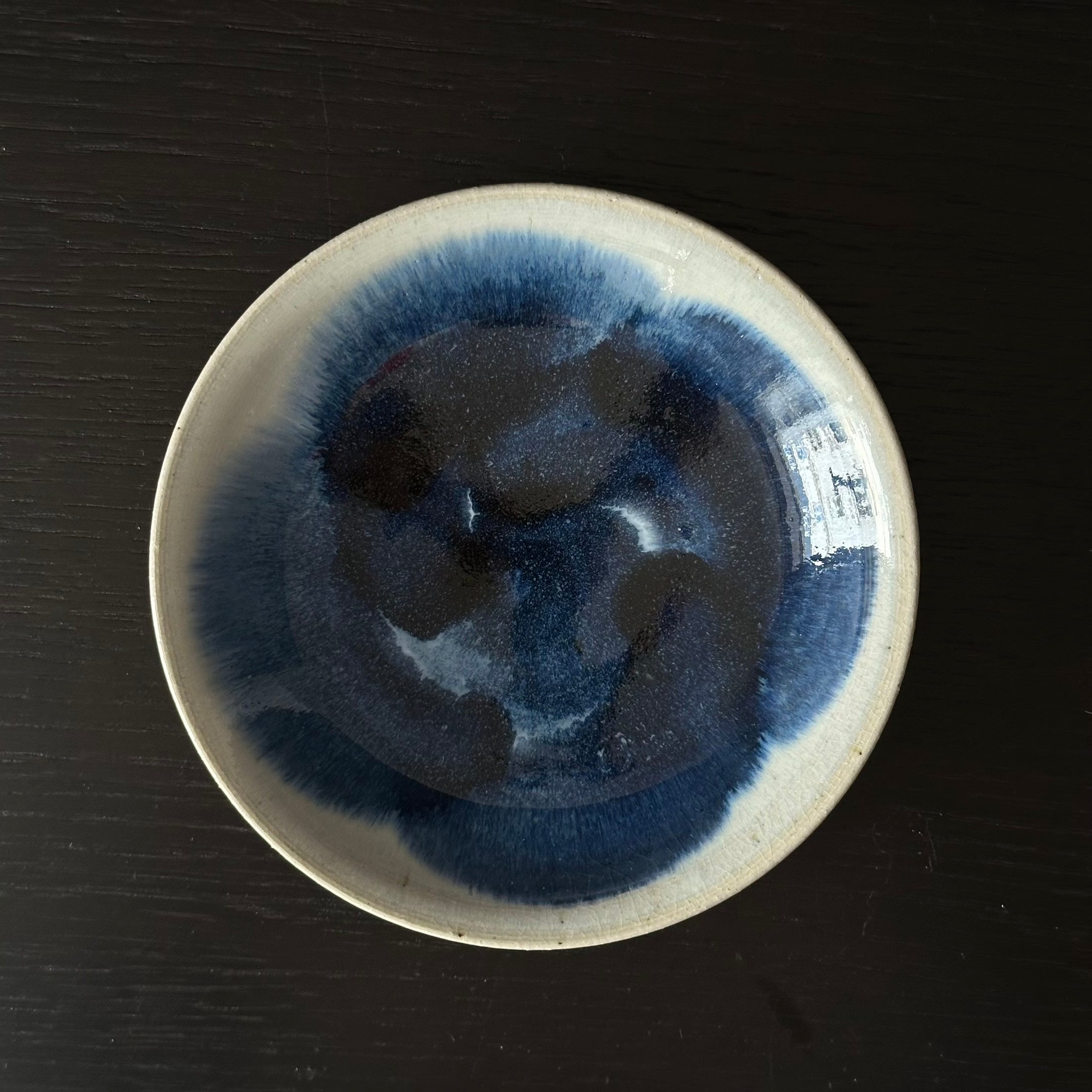
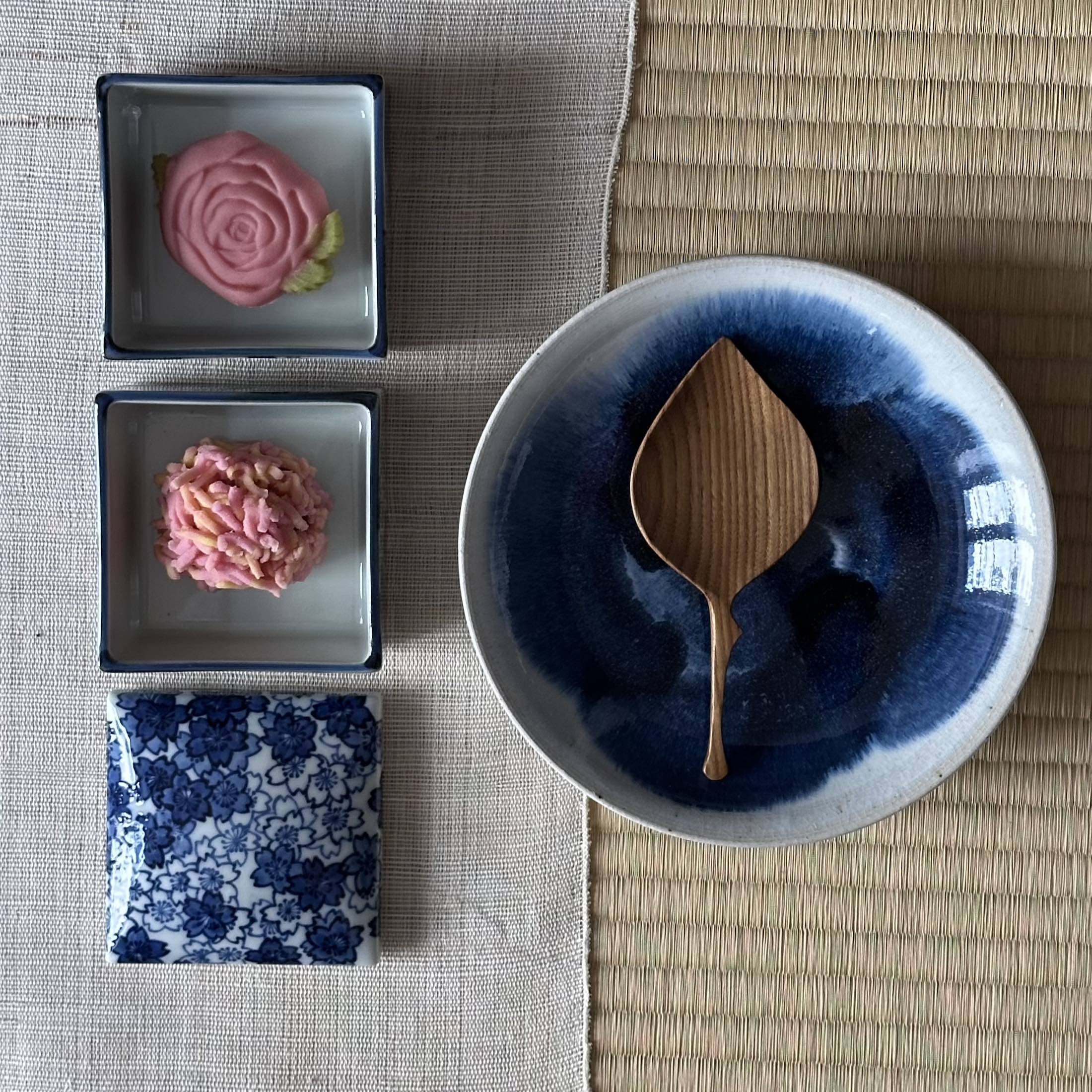
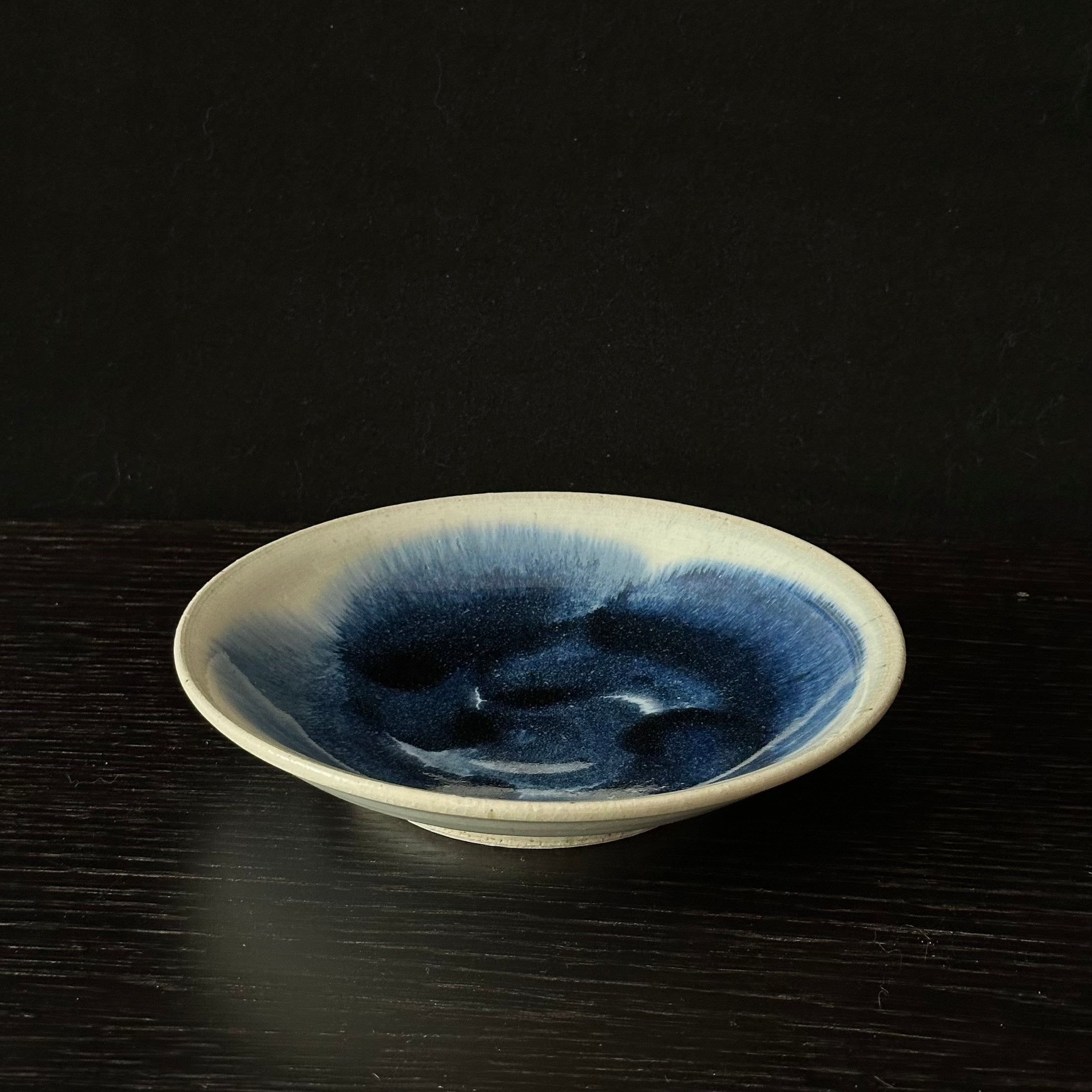
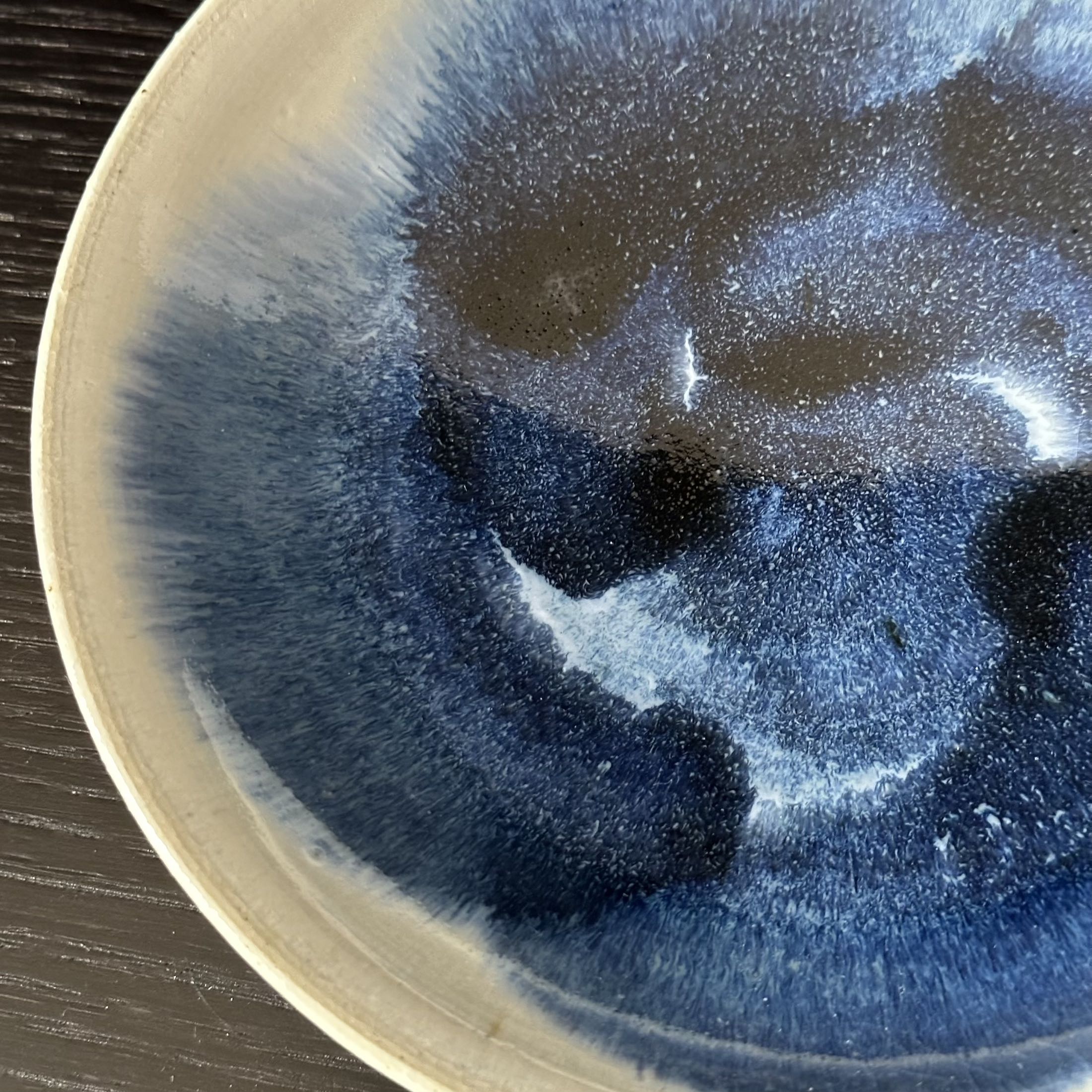
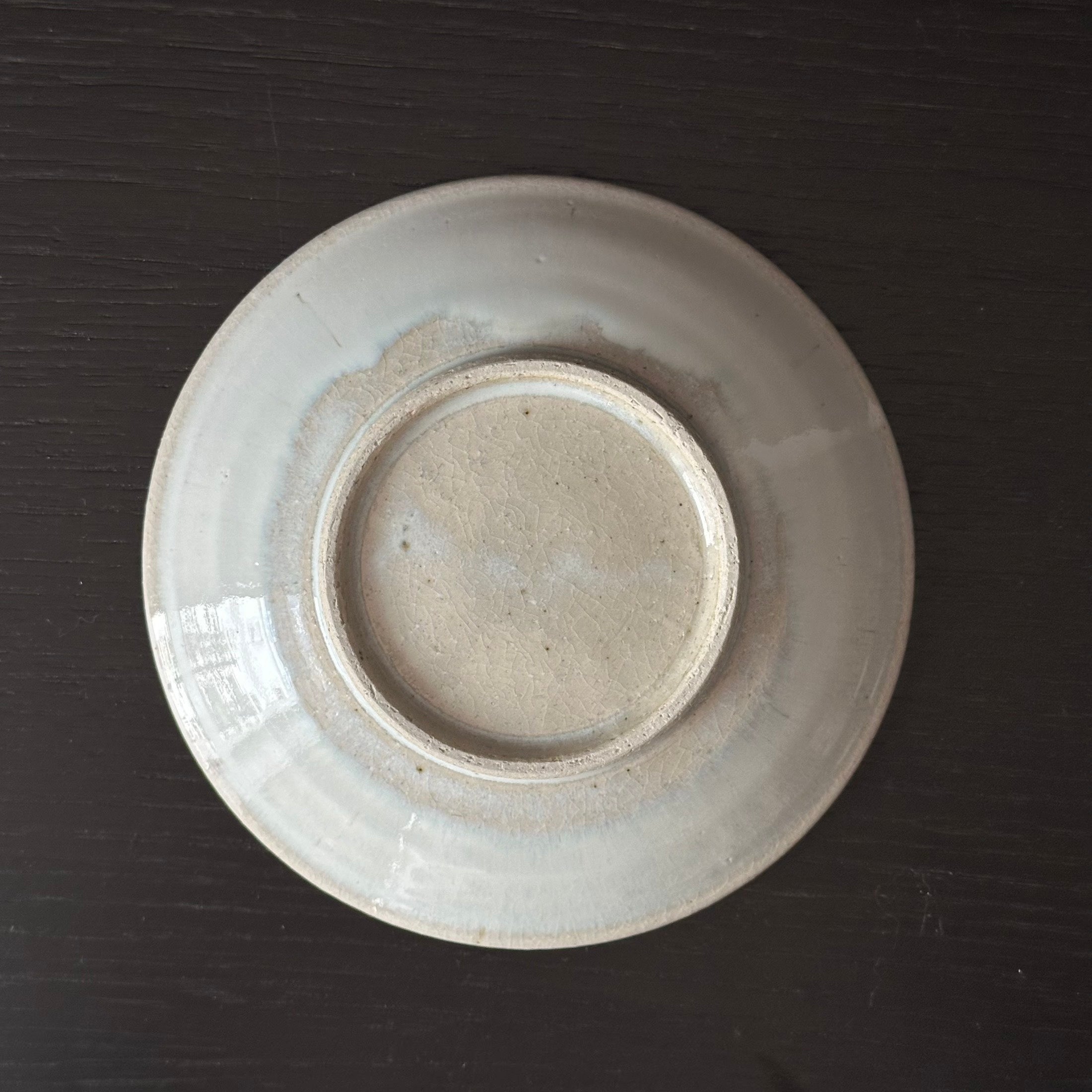
Blue glaze plate by Ritsuji Takeuchi
A deep blue Japanese ceramic plate, where the glaze forms moving surfaces. The surface captures the light and reveals a remarkable range of intense blues. The piece exudes a calm and elegant presence, somewhere between depth and transparency.
The ceramist
Ritsuji Takeuchi (born 1959 in Kurashiki, Okayama Prefecture) is the founder of the Sakazu Enoki-gama kiln, which he built in 1986 in the Sakazu district, known for its pure water springs. Son of the architect Kōichirō Takeuchi and grandson of the first director of the Ōhara Museum, he continues a family tradition sensitive to art and creation. For more than forty years, he has pursued research focused on two primordial colors, shinsya (red) and gosu (blue), which he considers fundamental hues of Asian nature and culture. His firings, carried out at approximately 1280 °C, aim to reveal the strength and density of these colors in a profoundly living material.
The technique and the decor
The decoration is based on a gosu (cobalt) glaze applied to the interior by generous pouring, then spread naturally by rotation before firing. This process gives the glaze a fluid movement, visible in the distribution of tones: a center of a very dense blue, almost black, and areas where the material recedes slightly to reveal the edges. During firing, the glaze melted, creating a bluish fringe effect, as if the pigment had frayed under the heat. The exterior has a clear and uniform glaze, while the reverse reveals a fine network of cracks (kannyū, crackle) around the foot. The whole highlights the contrast between the light ceramic and the liquid depth of the blue, a characteristic signature of pieces from the Sakazu Enoki kiln.
Practical information
Place
Japan, Kurashiki (Okayama), Sakazu Enoki-gama
Dimensions
Diameter 18.5 cm — Height 3.4 cm
Weight
362 g
Materials
Ceramic, gosu (cobalt) glaze
Period
Contemporary
Care instructions
After use, empty the water and let it air dry, avoid thermal shocks and abrasive products, wipe with a soft cloth, no dishwasher, oven, microwave.
DELIVERY
Delivery
Free delivery in mainland France for purchases over €200. Orders are generally dispatched within 2 working days, except in special cases, as indicated in the banner at the top of the website.
Precious objects are wrapped in a cloth tied according to the precious Korean art of pojagi. Some exceptions apply, particularly if the objects are large. Learn more >
Detailed delivery information is available via this link >
Your invoice will be sent by email
Payment methods
By card (Stripe operator): Visa, MasterCard, Discover, American Express.
Secure card payment with 3D Secure.
By PayPal, Apple Pay, Google Pay and Shop Pay
Returns and exchanges
14 days to change your mind.
Choose options






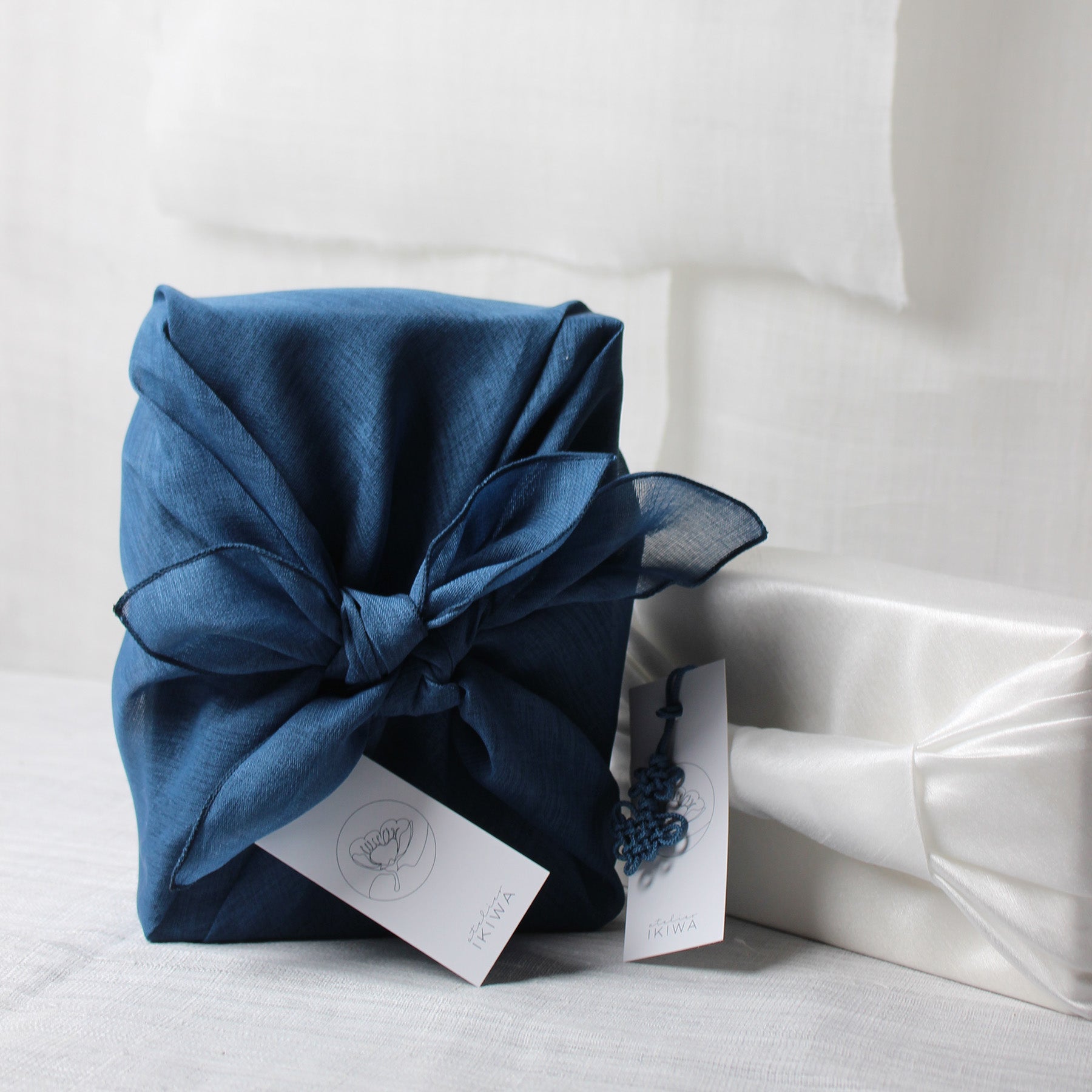
The art of wrapping
The precious objects are wrapped in a beautiful cloth beautifully tied according to the little-known art of Korean pojagi. Details and conditions >


